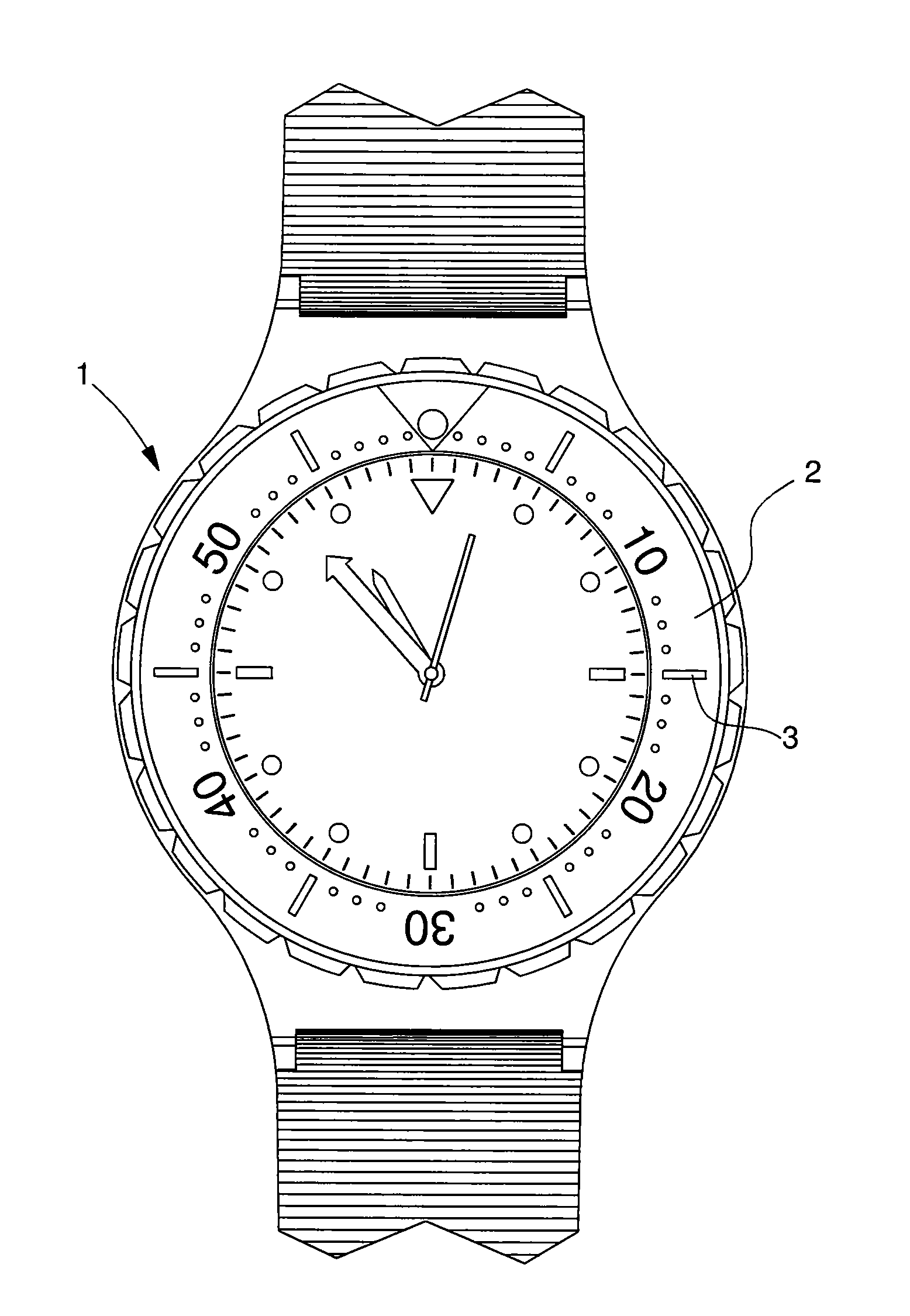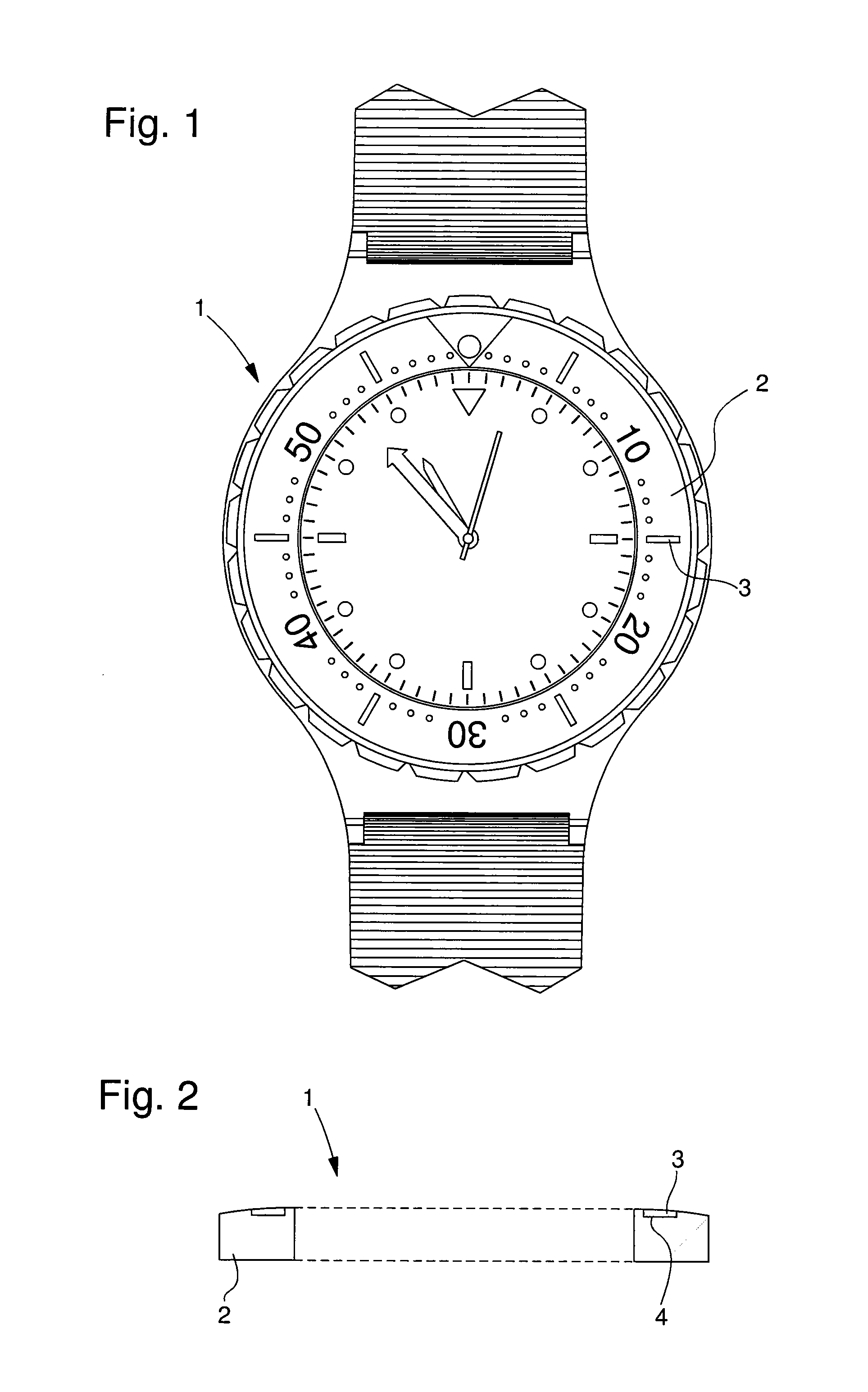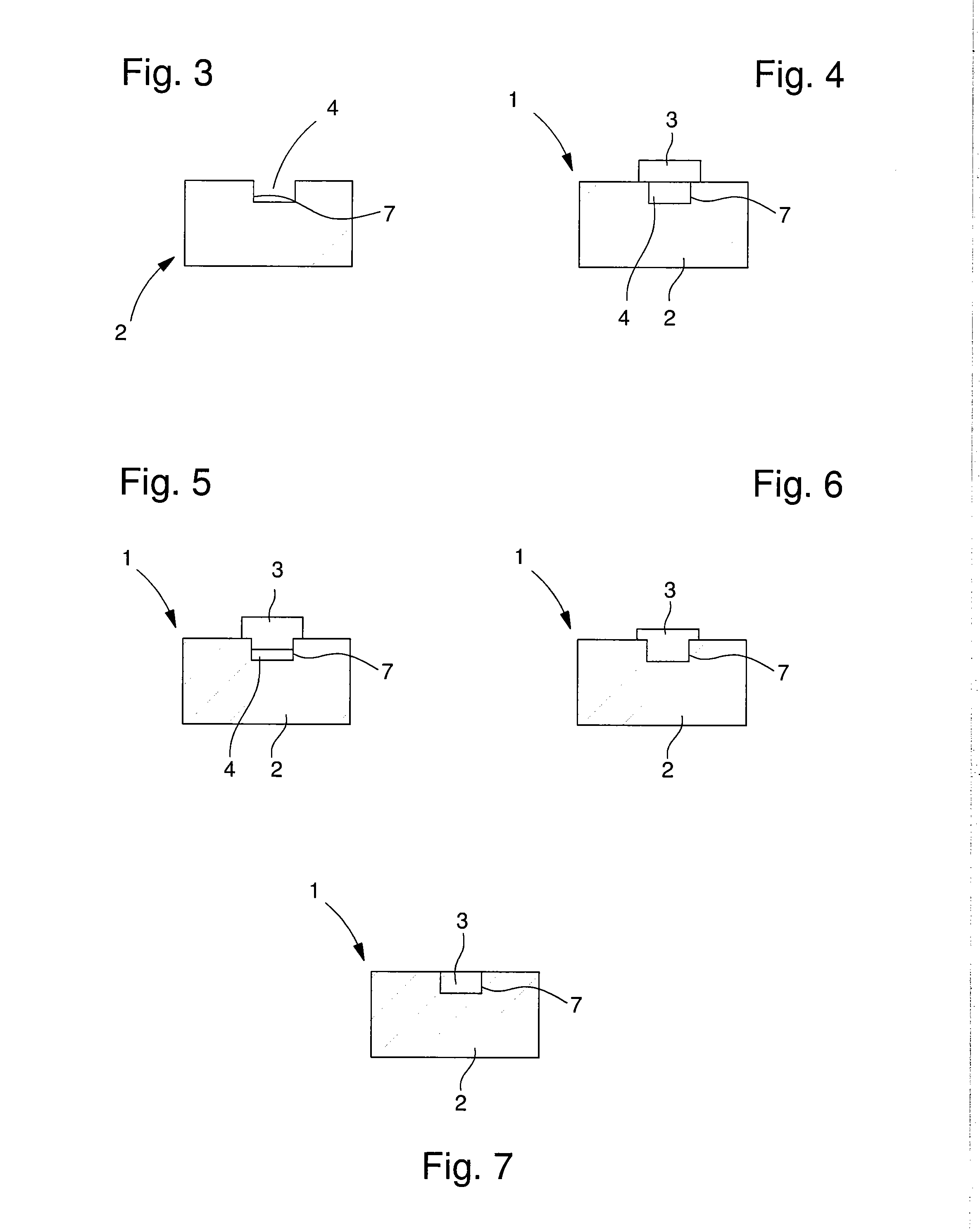Decorative piece made by inlay
a technology of decorative pieces and inlay, applied in the field of decorative pieces, can solve the problems of complex type of methods, extremely slow, and heavy materials, and achieve the effect of simple operation
- Summary
- Abstract
- Description
- Claims
- Application Information
AI Technical Summary
Benefits of technology
Problems solved by technology
Method used
Image
Examples
first embodiment
[0031]FIGS. 1 and 2 show a first embodiment according to the invention. In this embodiment, decorative piece 1 may be, for example, a watch bezel inlaid with signs. It is clear that the bezel includes an annular body forming support 2 in which signs, forming aesthetic elements 3, are inlaid. The bezel may be made, for example, of ceramic material and may include recesses or hollows 4, shown in FIG. 2, arranged on said bezel for receiving the inlaid signs. This inlay advantageously enables said signs to be partially covered and thus gives the product a longer life time by preventing the constituent parts 2, 3 of decorative piece 1 from becoming detached.
[0032]Each hollow 4 then takes the form of a design corresponding to the sign to be inlaid and has sides or lateral walls 7, preferably approximately perpendicular to the visible surface. Hollows 4 are filled so that the signs project, are flush with or form a hollow relative to the annular body.
[0033]Thus, to fill said hollows 4, the...
second embodiment
[0045]Thus, to make decorative piece 1 according to this second embodiment, the method is the same as that described previously, i.e. the elements to be inlaid are pressed onto support 2. This method is described in FIGS. 11 to 14. In this case, it is support 2 that is heated to make it viscous and to inlay therein said aesthetic elements 3. Thus, as seen in FIG. 11, aesthetic element 3 is placed on said support 2: the assembly is then heated and pressed in a hot press as seen in FIG. 12. In the example shown in FIGS. 11 to 14, the pressure is localised on the element to be inlaid alone. It is clear that the pressure can be exerted over the entire decorative piece. This operation is carried out until aesthetic element 3 is partially covered in said support 2 as seen in FIG. 13. Once the amorphous material has cooled, polishing is carried out to remove the surplus material, as shown in FIG. 14.
[0046]According to a first variant, aesthetic elements 3 can be made of crystalline metal. ...
third embodiment
[0048]According to the invention, aesthetic elements 3 are made of enamel. A mixed decorative piece 1 can be made of amorphous material-enamel, offering a particular visual appearance while being simpler to produce. Indeed, to inlay enamel elements on a crystalline metal, the features of the metal, such as, amongst others, the melting point of the metal and the expansion coefficient, mean that the inlay is complex. This is not the case for an amorphous material for which the temperature at which the material becomes viscous is lower, allowing inlay work at lower pressure. This lower pressure exerted on the enamel then means that the enamel does not break.
[0049]For these three variants, the viscosity of the amorphous material forming support 2 enables said material to creep into every corner thereby solidly securing aesthetic elements 3 in support 2.
[0050]Of course, the above variants are not limited to inlaying a single aesthetic element. Indeed, several aesthetic elements, which ma...
PUM
| Property | Measurement | Unit |
|---|---|---|
| thickness | aaaaa | aaaaa |
| metallic | aaaaa | aaaaa |
| area | aaaaa | aaaaa |
Abstract
Description
Claims
Application Information
 Login to View More
Login to View More - R&D
- Intellectual Property
- Life Sciences
- Materials
- Tech Scout
- Unparalleled Data Quality
- Higher Quality Content
- 60% Fewer Hallucinations
Browse by: Latest US Patents, China's latest patents, Technical Efficacy Thesaurus, Application Domain, Technology Topic, Popular Technical Reports.
© 2025 PatSnap. All rights reserved.Legal|Privacy policy|Modern Slavery Act Transparency Statement|Sitemap|About US| Contact US: help@patsnap.com



